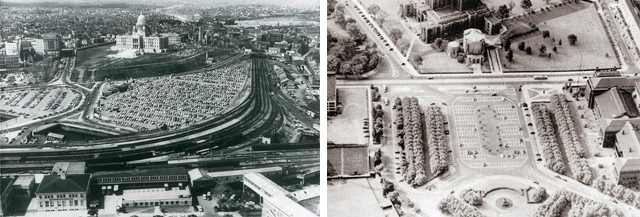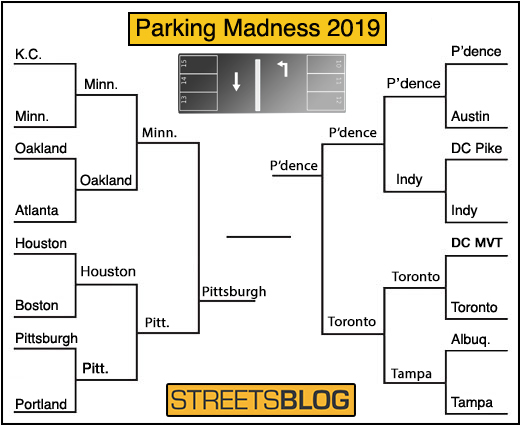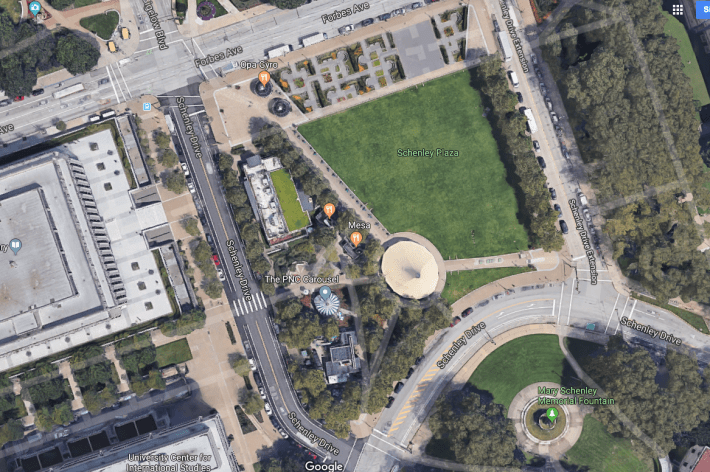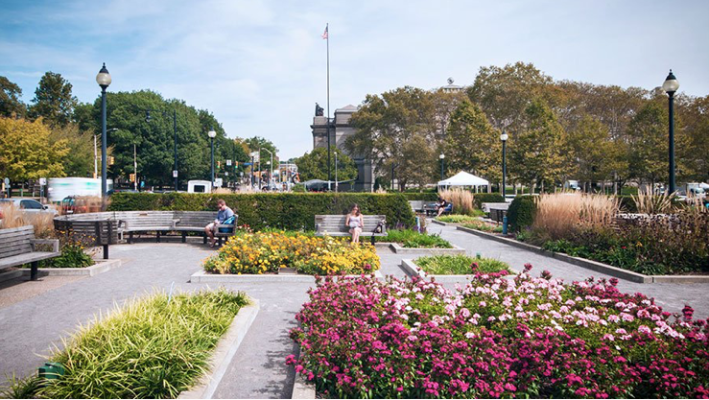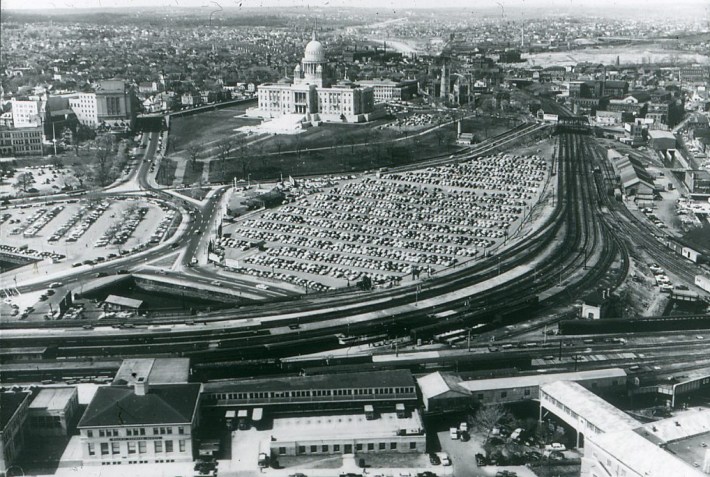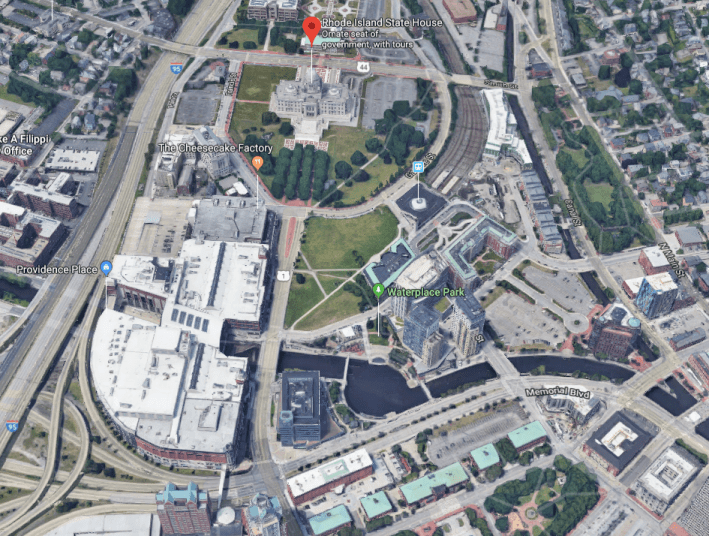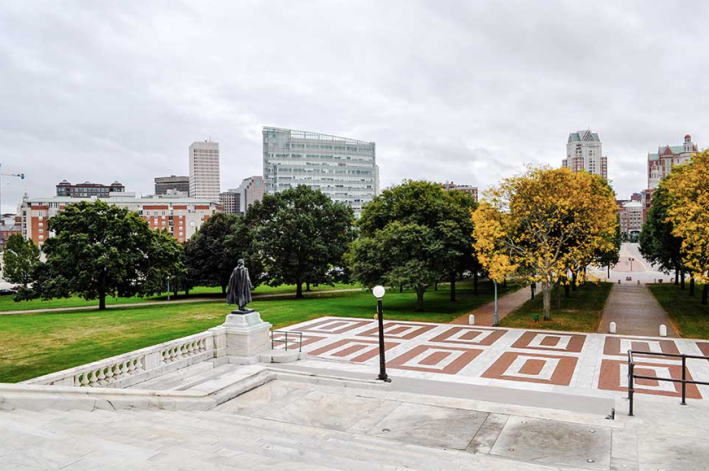This is it: The final match of Parking Madness 2019.
Out of a field of 16 remarkable city spaces that used to be parking lots, just two cities remain standing.
Pittsburgh edged out Minneapolis in a heated competition that drew more than 4,000 votes. But the over-the-top enthusiasm from the Steel City, and its beloved Schenley Park, pushed it past Minneapolis's resurgent Downtown East.
Meanwhile, Providence — and its revitalized Statehouse area — won an extremely narrow victory over a fierce contender in Toronto, topping the Canadian city by just 1 percent. Today, the finalists off for the honor of being named the Most Improved Parking Crater in America. Let's begin.
Pittsburgh
This spot, Schenley Plaza, is a beloved place in Pittsburgh. But not too long ago, in darker days, it was just a very well landscaped parking lot.
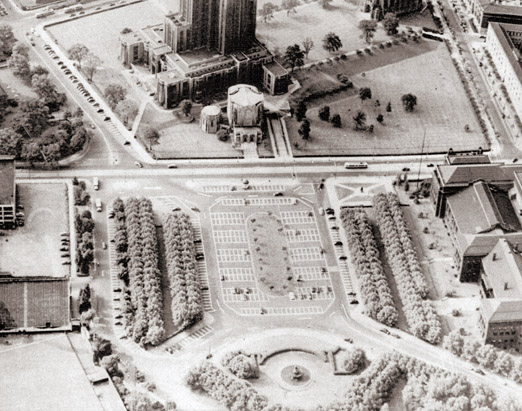
Today it is 4.5 acres of well-used park space in the Oakland neighborhood right near the University of Pittsburgh. It includes a carousel, outdoor and indoor dining options, a landscaped green and a fountain. Now as then, the famous Cathedral of Learning, a University of Pittsburgh-owned 42-story, 1920s-era structure, towers over it.
In the early 2000s, the park underwent a major renovation by the Pittsburgh Parks Conservancy. This group has been lobbying Yinzers to vote for this site (the PPC told Streetsblog) — helping propel it past Houston and Portland and Minneapolis in earlier rounds of competition.
Here's a couple photos of what Schenley Plaza looks like on the ground.
Not bad, right? Pittsburgh really wants this win and the Golden Crater. But Providence, its competition, has an extremely great story below.
Providence
This transformation in Providence, around the Rhode Island Statehouse, is truly historic.
A crazy amount of effort went into transforming this into a functional urban space that connects the Statehouse grounds to the Woonasquatucket riverside and downtown Providence.
Historic preservationist Phillip Marshall has a good description of the Bad Old Days on his website.
The rivers had been abused and neglected for decades. Remember that by the 1980s, Guinness Book of World Records listed Providence as having the widest bridge in the world — 1,147 feet, all of it as a parking deck covering the polluted rivers.
The Statehouse, historically, was cut off from downtown by "10 [railroad] tracks, many trestles, bridges, viaducts, freight sheds, and much more infrastructure," he writes. But in 1976, Congress allocated $1 billion to better connect Boston to D.C. by Amtrak — and part of that money funded the relocation and hiding of the tracks.
In addition, the city, with state support, daylighted and channelized a portion of the Woonasquatucket River. It is now fronted by a walkable park space called Riverwalk and Waterplace Park, which hosts the famous Waterfire festivities, a major civic and tourist attraction.
By 1994, Marshall writes, the Capital Area, which is the 77-acre space surrounding the Statehouse, was home to "over one million square feet of retail space, 2 to 2.5 million square feet of office space, 1,000 hotel rooms, 500 residential units, 10,000 permanent jobs."
Having the Amtrak Station right next to the Statehouse makes this site more multimodal than many smaller state capitals, like Lansing, which won last year's Parking Madness tourney. In addition, a plan is underway to add a multi-modal transit center to the site near the Amtrak station, consuming part of the statehouse grounds, that will be mixed-use and walkable, further enhancing the area, and providing options for Statehouse workers outside of single-occupancy commuting.
Here's a photo of the Capitol over the Waterfire event, which was held nine times in 2018, drawing visitors from across the world.

In other words, this is all a big upgrade from a parking lot.
So which of these two great American cities deserves the Golden Crater and the honor of being named the Most Improved Parking Crater in America? You decide. Voting wraps up Monday at noon. Streetsblog will reveal the winner on Tuesday.
